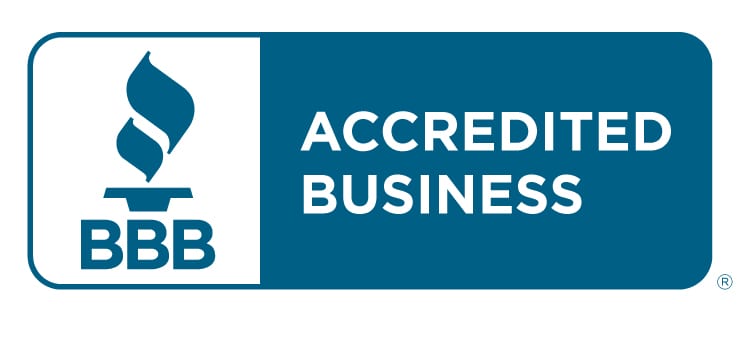Your firm or organization has just begun another year of operation, which is an achievement to be proud of.
So, how’s the marketing at your company going? In terms of marketing strategy, are you head and shoulders above your competitors? If you’re not happy with your company’s overall brand image and messaging, a marketing makeover may well be necessary.
But how can you tell if your brand needs a total overhaul or just a refresh? The key is to be aware of specific Red Flags that will indicate whether you need to rebrand or at the very least change your marketing messaging.
If you believe your company exhibits more than one of these Red Flags, it’s time for a marketing makeover.
The Seven (7) Red Flags in Marketing To Look Out For
- Inconsistent Branding
Great brands all have one thing in common – consistent visual images, colors, and messaging.
By having mismatched marketing imaginary, including collateral materials, consumers will be confused, which often means they’ll not be drawn to your brand and will search for another provider that will provide them with the assurance they’re looking for. If your logo, brochures, sell sheets and website do not look consistent with each other, as if they were designed by different providers over the years, then it’s time for them to be re-designed by the same creative provider so your company has that consistent brand imaging that is essential in today’s competitive environment.
- Your Competition’s Marketing Is Better
You need to make a change if your competitors’ content, appearance, and overall branding are better than yours.
We often find that the companies that provide superior products or services often are not the best marketers. If your lessor competitors have better marketing, then there’s a good chance they’re larger and more profitable.
Making a great first impression with potential customers is essential. The world moves so fast that you may not get a chance to make a second impression. If your competitors’ marketing imagery and messaging make yours look amateurish, then it’s time to do something about it.
It may be the perfect time to call in a marketing and branding expert, to evaluate your current marketing efforts while taking a look at what your competitors are doing.
In all, it’s essential to understand your company’s unique story and what makes you different and yes, better than the competition, and share those unique offerings and benefits with the marketplace in a memorable and engaging way.
- Your Marketing Is Focused Too Much On You
To truly connect with your audience, you must focus entirely on them. What can you do to help them make their lives easier? What solutions do you have to resolve their problems? This is a challenging road to traverse because you need to engage with them on several levels while marketing your firm and its goods or services.
Relationship building should be a top focus when it comes to marketing. Important communications and conversations accomplish more than disrupting meaningful messages and discussions with constant advertisement.
Customers will become more loyal the more you understand them and interact with them in a way that promotes a connection.
- Low ROI (Return On Investments)
The cost per acquisition (CPA), or how much it costs to acquire one new customer, is tied to a company’s return on investment (ROI).
For your business to survive in the corporate world, you should be able to minimize the amount you spend on gaining new customers, in order to maximize ROI.
If you’re not convinced that your sales and marketing efforts are maximizing your ROI, it could be time to revamp your marketing strategy.
- Poor Web Traffic
Poor web traffic is a result of several factors such as — Poor SEO, terrible website load time, unresponsive website formatting, plenty of broken links and images, etc.
But all these ultimately signify that your marketing efforts are ineffective in driving traffic to your website and social media accounts. Your digital marketing is in need of a makeover if this is the scenario.
- Poor Conversions
While it is essential to invest in effective SEO to drive traffic to your website, this shouldn’t be the end goal.
Many businesses engage in effective SEO and advertising with only the purpose of increasing traffic to their website. Although they may be successful in doing this, only driving in traffic would not improve sales.
Businesses should be able to convert at least 2 to 5 % of their incoming traffic.
If your website receives tons of traffic but isn’t converting them into paying customers that simply hints that your web copy is ineffective. If this is the case, then your online marketing needs a revamp.
- Technology Has Changed…Have You?
Is it easy to find your message on different marketing and social media channels that matter to your target audience? Is it simple to explore your website and place orders? If your website isn’t mobile-friendly, you’re losing money.
According to research published in October 2021, 55 percent of consumers worldwide made purchases using their mobile phones.
Not only that, but Google declared on April 21, 2015, that mobile-friendly websites will be ranked higher than non-mobile-friendly websites. If your website is unresponsive, it will have a big impact on how it appears in search results. And how will you engage with your consumers if no one visits your website?
What’s My Next Step?
Giving your marketing a makeover doesn’t have to be a monumental task; a new logo and brand colors could suffice. A few minor changes to your existing website, such as new images, more engaging copy, and a mobile-friendly design, maybe all that’s required.
A 360-degree corporate rebranding, which could include a new company name, logo, website, marketing materials, social media presence, and more, can be a major undertaking.
In the wrong hands, a marketing makeover has the potential to dramatically reshape your company image and not in a good way. That is why working with a professional marketing agency to guide you through the process is important.
For over 25 years, Smith Marketing has assisted businesses and organizations with their brand messaging. We have the expertise, knowledge, and technological skills to build the brand your firm deserves.
It is not necessary to wait months to give your company a refreshed look or even an image makeover. We’ve worked with businesses where we gave their business a fresh new look with a new logo, tagline, website, and marketing elements in as little as 45 days. Now, these businesses are good for at least another five years, perhaps even longer.
So what’s holding you back?
If you need help in taking your company’s marketing to the next level, give us a call at 815-355-6892, email us at info@smithmarketing.com or visit our website at www.smithmarketing.com








